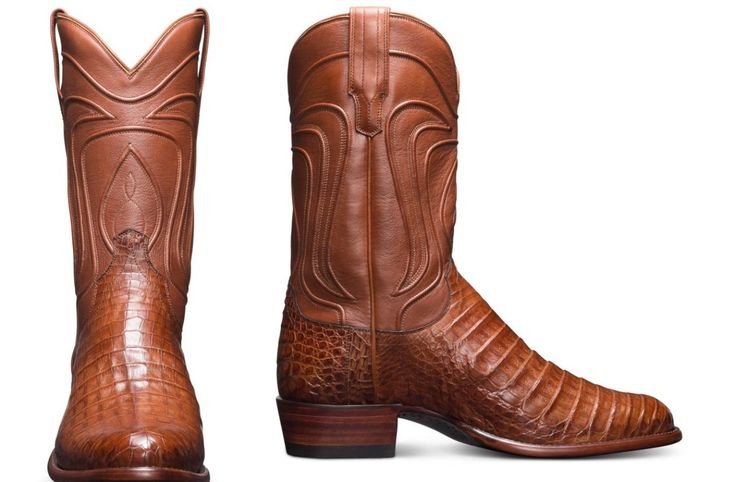Introduction
Men’s cowboy boots are more than just footwear; they are cultural icons steeped in tradition, craftsmanship, and symbolism. Originally designed for practical use by cowboys and ranch workers in the American West, cowboy boots have transcended their utilitarian origins to become a global fashion statement, symbolizing independence, adventure, and rugged masculinity. Today, cowboy boots hold cultural significance not only in the United States but around the world, where they continue to influence fashion, music, and pop culture. In this article, we’ll explore the cultural significance of men’s cowboy boots and how they have shaped and been shaped by global trends.
The American West: The Birthplace of Cowboy Boots
Cowboy boots are inextricably linked to the American West, where they were originally designed in the late 19th century. The purpose of cowboy boots was purely practical—cowboys needed durable, sturdy boots that could withstand the harsh conditions of ranch work, horseback riding, and long hours in the saddle. With high shafts to protect the legs, pointed toes for easy stirrup access, and a distinct angled heel for stability while riding, these boots became the quintessential cowboy tool.
Beyond their functionality, cowboy boots began to symbolize the rugged, self-reliant spirit of the American frontier. As the myth of the American cowboy grew in the early 20th century, largely fueled by Western films and literature, cowboy boots became a symbol of independence and adventure. They were adopted not only by working cowboys but by anyone who wanted to embody the ideals of the Western frontier.
Hollywood and the Global Spread of Cowboy Boots
Hollywood played a major role in the cultural significance of cowboy boots, especially in spreading their popularity around the world. From the 1920s to the 1960s, Western films were a dominant genre in American cinema. Iconic actors like John Wayne, Clint Eastwood, and Gary Cooper made cowboy boots a staple of their on-screen personas, further embedding them in the cultural consciousness as symbols of toughness, bravery, and individuality.
As these films gained global popularity, cowboy boots began to be seen not only as functional footwear but as a fashion statement with cultural depth. Around the world, cowboy boots became associated with the adventurous spirit of the American West, symbolizing freedom and resilience. The global appeal of Western movies also helped cement cowboy boots as fashionable and aspirational footwear, seen as a way to channel the rebellious energy of the cowboy lifestyle.
Cowboy Boots in Global Fashion
While cowboy boots originated in the American West, their influence has spread far beyond the borders of the United States, making a significant impact on global fashion. Over the decades, cowboy boots have become part of the fashion scene in various countries, appearing on runways, in streetwear, and even at formal events.
United States: A Fashion Staple with Deep Roots
In the United States, cowboy boots remain a deeply ingrained part of Western culture and fashion. Worn by ranchers, rodeo stars, and everyday fashion enthusiasts, cowboy boots symbolize a connection to the country’s rural roots while also being a statement of individuality. They are often paired with jeans, suits, and even formal wear, making them a versatile fashion accessory that transcends its working-class origins. American designers like Ralph Lauren have integrated cowboy boots into high fashion, blending Western elements with luxury design.
Mexico: A Cultural and Musical Influence
Mexico shares a close historical connection with cowboy culture, particularly through the charro tradition. Mexican cowboy boots, often elaborately decorated with intricate patterns and colors, are a key part of traditional charro attire, worn during rodeo events and festivals. Mexican charros—skilled horsemen—have influenced not only the design but the cultural significance of cowboy boots in Mexico.
In addition, cowboy boots are a staple in regional Mexican music genres like norteño and banda, where musicians frequently wear them on stage as part of their performance outfits. These boots, often made from exotic leathers and featuring bold designs, are symbolic of Mexican pride, masculinity, and craftsmanship.
Europe: A Symbol of Rebellion and Individuality
Cowboy boots gained popularity in Europe during the mid-20th century, particularly in the 1960s and 70s, when the counterculture and rock music scenes embraced Western-inspired fashion. In the UK, rock stars and style icons like The Rolling Stones and David Bowie were seen wearing cowboy boots, helping to cement their status as symbols of rebellion and individuality. European designers began incorporating cowboy boots into their collections, blending them with high fashion elements and giving them a modern twist.
Today, cowboy boots continue to be popular across Europe, often worn as statement pieces in casual and formal settings alike. Their bold design and connection to a rebellious spirit make them a favorite among fashion-forward individuals.
Japan: Western Influences in Urban Fashion
In Japan, cowboy boots have found a unique niche in urban fashion. Since the late 20th century, Japanese youth subcultures have embraced American Western wear as a way to express individuality and admiration for American culture. Cowboy boots are often paired with denim, leather jackets, and oversized T-shirts, creating a fusion of American and Japanese street style.
Japanese craftsmanship has also embraced cowboy boots, with local artisans producing high-quality boots that blend traditional Western design with Japanese precision and detail. The combination of cultural influences has led to cowboy boots becoming an iconic piece of fashion in Japan, symbolizing both Western ideals and Japanese craftsmanship.
The Role of Cowboy Boots in Music and Pop Culture
Cowboy boots have long been associated with country and Western music, but their influence has expanded into various genres and aspects of pop culture. Musicians from Johnny Cash to Bob Dylan to modern-day country stars like Tim McGraw and Blake Shelton have embraced cowboy boots as part of their stage personas, solidifying their place in music history.
In rock, punk, and alternative music scenes, cowboy boots have also become symbols of nonconformity and rebellion. Musicians like Bruce Springsteen and members of punk bands have adopted cowboy boots as a way to blend Americana with edgy, rebellious style. Their presence in pop culture has only enhanced the global appeal of cowboy boots, making them a symbol of artistic expression and individuality.
The Craftsmanship Behind Cowboy Boots
While cowboy boots have become a global fashion icon, the craftsmanship that goes into making them remains a deeply respected art. Many cowboy boots are still handcrafted by skilled artisans who use traditional techniques to ensure durability, comfort, and style. From selecting high-quality leathers to hand-stitching intricate patterns, the process of making cowboy boots requires a high level of skill and dedication.
Brands like Lucchese, Tecovas, and Tony Lama are celebrated for their attention to detail, using time-honored techniques to create boots that are not only stylish but built to last. As cowboy boots continue to evolve in fashion, the craftsmanship behind them remains a critical part of their cultural significance.
Conclusion
Men’s cowboy boots have come a long way from their humble beginnings on the American frontier. Today, they are global symbols of independence, style, and craftsmanship. From the ranches of the American West to the streets of Tokyo, cowboy boots continue to resonate with people around the world, embodying a blend of tradition, rebellion, and modern fashion. As cowboy boots remain timeless in their appeal, their cultural significance continues to grow, making them an enduring part of global fashion history.




